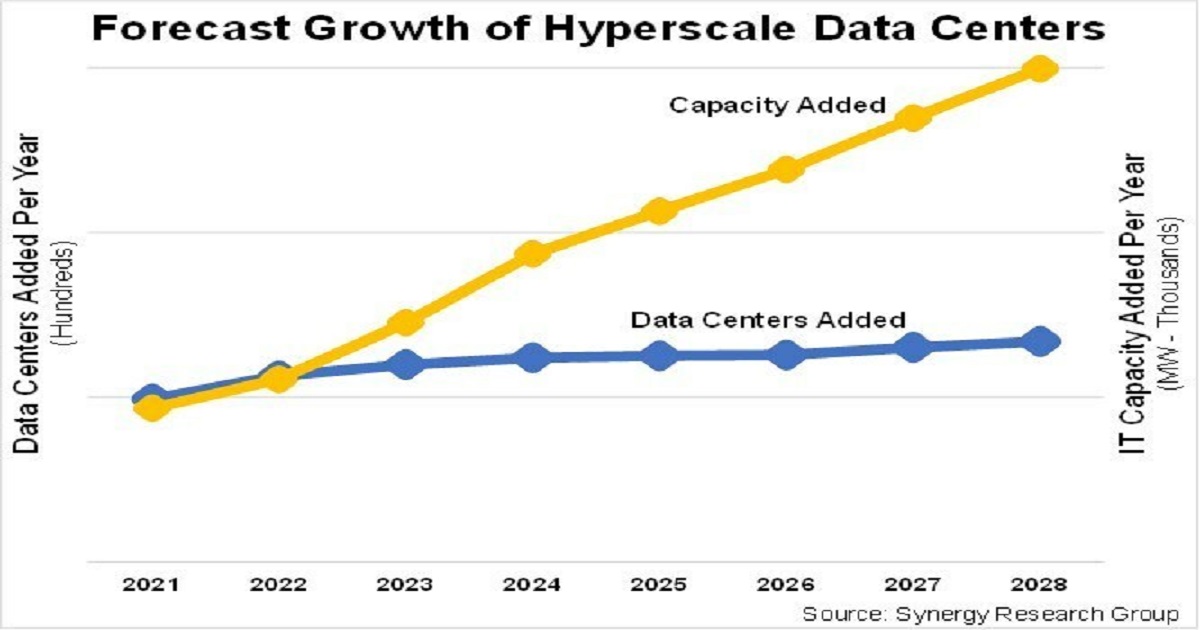
Let’s talk about hyperscale data centers.
Hyperscale data centers, for those that don't know, are colossal facilities designed to meet the insatiable demand for computing and data storage resources in the digital era. They are known for their immense size, scalability and efficiency. These data centers can adapt to changing workloads and encompass large quantities of servers, storage systems and network infrastructure.
Hyperscale data centers are often operated by major cloud service providers, such as AWS, Azure, and Google (News - Alert) Cloud, enabling them to deliver a vast array of services to a global customer base. They are at the forefront of the data-driven economy, supporting everything from web hosting and big data analytics to AI and machine learning applications.
Speaking of AI, it’s because of the surge of generative AI that the average capacity of hyperscale data centers to be opened over the next six years will soon be more than double that of current operational hyperscale data centers, according to new data and forecasts from Synergy Research Group.
Over the years, the essential computing workloads hosted in hyperscale data centers have consistently grown in magnitude. This progression reflects the escalating demands for processing power, storage, and networking resources, driven by the reliance on digital services, cloud computing and data-intensive applications.
Now, how does AI affect this?
Well, recent advancements in generative AI technology are not primarily aimed at augmenting the quantity of data centers, which are already on a robust growth trajectory, with an annual increase exceeding a hundred. Instead, the impact lies in the heightened power demand required to operate these data centers.
The proliferation of GPUs in hyperscale data centers, primarily propelled by AI applications, necessitates a substantial increase in power density within the racks and data center infrastructure. This is because GPUs are power-hungry components, and the data center racks and supporting infrastructure need to be upgraded to provide the electrical and cooling capacity necessary to accommodate these energy-intensive GPUs.
This prompts hyperscale operators to reevaluate and reconfigure aspects of their data center architecture and deployment strategies.
As the typical IT workloads in individual data centers continue to surge, the count of operational hyperscale data centers will experience a continuous rise. This growth trend will also encompass the retrofitting of existing data centers to enhance their capacity.
Edited by Alex Passett




